If you were to round up the hours I’ve spent on social media, you might find my top addiction is Marketplace. I always look for furniture, antiques, and unique home goods to add to my space. Even now, I’ve been considering driving 6 hours (there and back) to pick up a couch I found in North Carolina. To me, when it comes to the space you live or work in, it’s important to enjoy it. The atmosphere we’re in affects every part of our lives. It can inspire us to work, relax, interact with one another, or even make a plate of food taste better. I love it when I’m sitting down at a restaurant bar, and it feels like I could play a character in a movie. Whether it’s the role of the local regular, debonair spy, or the mysterious traveler who’s “just passing through,” the bar's style tells a story. As I’ve passed from one restaurant to the next, there’s been a common thread amongst them that I find in the most well-curated and uniquely designed spaces. That commonality is that a man named Smith Hanes had his hand in it. Smith is a designer in the Atlanta, GA area who has created some of the most appealing spaces not just in Atlanta but across the US. If you’ve been to Lyla Lila or Bar Blanc, two places that I’ve written about, or if you’ve made your way to The Optimist, No. 246, Nina & Rafi, Superica, Gaja, and so many more throughout Atlanta, Smith and his team have designed them all. To understand Smith and what makes his work so special, I visited his studio to meet his remarkable team and talk about his philosophy and approach to design.
The Place: Smith Hanes Studio
1. What’s the story of Smith Hanes?
2. What makes your work unique?
3. What sort of projects do you work on?
4. Why focus on restaurants?
5. What’s your approach?
Who is Smith Hanes?
Well, I grew up in North Carolina in a small town. After university, I went to the West Coast and lived in Seattle, and I fell in love with culinary worlds that were more sophisticated than I'd grown up in. I realized the culinary world was a place where everybody could experience something sophisticated and that everybody has access to. I worked at a French bakery in Seattle for a few years while I was trying to decide what I wanted to do as a career. I took five years traveling the West Coast, from San Francisco to British Columbia, skiing, and just being kind of a wild child, finally realizing I was really gifted visually around spaces and organizing spaces and designing spaces, and so I spent several years working in the home furnishings industry.
I basically became self-employed, and I pitched myself as a consultant in the home furnishings industry designing spaces and eventually products. I spent many years working with vendors who made and imported goods. That's how I got into the world of design. I called myself a stylist and a display artist. I put rooms together in ways that helped sell the product to the buyer. But something was always kind of needling me....I loved the food industry....how could I apply what I knew about spaces to the food world? At that time, I met Steve Nygren, a legendary restaurateur, who was creating a community...Serenbe. Steve was the first to trust me to design a restaurant.... he hired me to work on The Serenbe Farmhouse Inn, as well as the Blue-Eyed Daisy bake shop. So really, that’s what launched my career as we know it today.
It was in 2002, and I did a number of projects with Steve and honed what I was doing in the food world, and I soon thereafter met Ford Fry. Ford was going to open his first restaurant, JCT Kitchen...he came to me and asked me to do the design for that. I was suggested to him by a fellow named Michael Phillips who later became the CEO of Jamestown Properties who created Ponce City Market. So Ford became a great client... we designed no 246 in Decatur and The Optimist in Atlanta. I did those three projects for Ford and then a lot of Serenbe work from 2000 until really 2005. That launched this career that I'm in right now.
So at this point in my career, we're working in the world of hospitality and have a top-tier client list of people who are developing incredible hospitality projects all over the country. The nature of the business is that we meet a client, and they do one project with us, and then within a couple of years, we're doing a second project with them. They're either an individual that has the ability to do a lot of projects, or they're a group of people that get together who create and manage various brands of restaurants. So that's kind of how it all happened.
What makes your work stand out?
Digging into our work, the magic of what we create has a lot to do with conceptualizing and drawing up spaces that have a certain feeling to them. And making things....I think that’s really our sweet spot....commissioning artisans to make things for us. Artisans, millworkers, metal workers, and people who work with their hands. So we are building spaces by hand when we design them. We’re not a firm that plans a space and then just buys everything out on the internet. We're making our own lighting and furniture for our projects, and we're commissioning locals. For the projects around here, we have all our guys in Atlanta, or if the project is in North Carolina, we're hiring those guys, or if we're in Iowa, then we want to use artisans and millworkers that are in Iowa.
What sort of projects do you take on?
So we just finished a project in upstate New York. It's a ski resort that was just bought by Sandy Beall, who owns Blackberry Farm. We did two projects with him on that ski mountain. One is a brand new place, and then we also did a remodel of a club that was already on the mountain.
We’ve worked with lots of really interesting people like a great chef out of Wilmington, North Carolina, Dean Neff, who is James Beard nominated. Our client list also holds Fred Castellucci of the Castellucci Group, who owns Iberian Pig and Cooks & Soldiers. We’re designing their next Japanese concept in Buckhead that will open soon.
Pretty much everything we do is on a human scale. It's really about personal level relationships with clients and people that make things. We don't do institutional work or schools or any of that kind of work. We've had a lot of people have us look at high-rise work, and I think it's just not in our wheelhouse. We're more about human-scale projects that can affect people on a visceral level, such as community places that people hang out, and that's our specialty.
Why do you have a focus on restaurants?
I just felt like I wanted to make an effect in that world. Even my wife is a food person, a chef. She owns a food business, and I actually helped her develop that business, which is called Bella Cucina. I think, culturally speaking, I’m well suited to advise people in that world. I understand the startup restaurateur who will often have the thought in their mind of, “The deal seals in March, and we have to open in June.” It’s a little bit of a complicated world, the restaurant industry, because you're dealing with a lot of mechanical things. For example, when you're installing a kitchen in a space, there are engineering issues that you have to deal with. They take time to design and time to make sure they're designed correctly. Correctly in regards to something like airflow, where if you put a hood in a space or you have to have air conditioning and heating systems. When a restaurateur or client comes to us with challenges on a project and they need questions answered, it's a great gift to be able to help somebody out, especially with how they're going to lay a path to being successful in their business. We try to get involved really early to help them. My goal is always that a client never pays what we call “dark rent,” meaning no rent before the lights are on. That has always been our goal for projects. We like being the client's advocate. We certainly like doing the most beautiful thing, the most layered thing, and we like doing the cool and the beautiful stuff. We love all of that too, but working through the deal for our client is also a very important thing to us.
How do you approach building out a space?
We spend a lot of time with the client first. We listen to the kind of place they want and to who the clientele is. How do they want the person to feel when they're in the space? Is it casual? Is it dressy? Is it a place that aspires to something of a different era? Does it want to feel retro? Does it want to have a modern vibe? We work in all kinds of aesthetics and eras. I've always felt, because of my work in the display world, that I was really more of a set designer than anything. We don't come to the project with our personal aesthetic. It's not like that. They're coming to us with their concept and with a brand. I would say most of our clients come to us with a business plan. We work with pretty well-heeled clients at this point. They know what they want. They know what can be successful for that location, for that community, or for that demographic. They really study who their customers are, and in our first meetings, we look at all of that.
Then, it starts with a floor plan. Given the approach of a human to this building, where should we put the front door? What's the flow of the space? Where do all the necessary things go? Like, kitchen and the bathrooms, and how can we hide them? How does the guest experience it from the minute they walk in to when they sit down? Then, we layer in all the layers. It's either a project that wants historical layers, or it could be a project that wants to be stripped away. Because if they’re serving beer, that's a more spare aesthetic, you know? All the layers aren't needed. If you're designing a French brasserie that wants to have historical references of the 1920s, that's layer upon layer, that’s every ceiling, wall, floor, furniture, everything has detail. If you're designing an outdoor pavilion, a place that features glamping and that kind of thing, it just wants to be stripped down to nothing. It wants to be beams and beautiful trusses. So a lot of times, we get the design from how many layers there are. The simpler it is or the sparer it is, the more honest and modest it might be. We’re looking for insinuations through materials and those layers. So we're communicating the client's dreams through materials, surfaces, lighting, and everything else.
A lot of the work we do is also acoustical. We lean into thoughts of, “Is this a space that's going to have 20-year-olds and hundreds of them, or is this a space that people are doing business in? How do the acoustics figure in for those two segments of the population?” We’re currently on the third brewery for a group out of Iowa, and they had never done sound attenuation in their spaces, and we gave them an acoustical ceiling in the last one we did in Cedar Rapids, and they began to do better business. They can cram 400 people into a room, and people can still have a good conversation, and they can still pound the music. But acoustics are something that we work on quite a bit.
Then, lighting often addresses the look and the feel. Depending on whether it's a place that has insinuations of history or is of a different era. The lighting can communicate that, but more than anything, we just want light to come from every surface. We want light coming from a lot of different places, which makes people look better. So it's really all about making people feel good in a space, you know? When they know they look good, then they feel good. You want to feel the best you can.
The Person: Smith Hanes
1. How do you stay passionate about your craft?
2. How has your style changed over the years?
3. Outdated design that you still love
4. Other areas of style you’re drawn to
What continues to keep you passionate about your career?
I honestly think it's making things. I think the other thing that excites me is being at a level in my career where people regularly acknowledge that they've been in our spaces and that they love them. I like the experience of people having an experience when they’re in our places. I also enjoy being at a place in my career where other professionals have a general knowledge of what we do and respect it. It's been nice to be the principal of a business that is respected and considered very good at what they do.
How has your style changed over the years?
In the beginning, you're doing what your gut tells you, designing space that inspires. After doing it for a while, you realize there are important details that you have to address, or the experience won't be right for the guest. For instance, acoustics and lighting...... can the space accomodate 200 people and can they still hear the person they are sitting next to? We've developed a number of acoustical innovations so our spaces are comfortable. and lighting....with new technologies in lighting and dimming we've had to study to make the lighting in a room scintillating.
What’s an outdated design that you still love?
I love a good dive bar. There's a bar in Valentine, Texas, where there are literally dollars all over the wall. There's a guy that brings his horse into the bar; like literally he rides his horse in the bar, gets off, has some beer, then gets back on the horse and leaves. I don't know that anybody would say that that type of place is outdated, but I think they have real life in them. There's Robert's Western World in Nashville. They have hot dogs and like moon pies that they serve, you know? Those are their food offerings. Then there’s George's in Iowa City. An old dive bar, and nobody's under 35 or 40 there. Like whether it’s the owners or anybody that goes to that bar, there’s nobody under 35. TVs are everywhere, and they're just watching the game.
What other areas of style are you drawn to?
I think the most fascinating thing to me with regards to style is really things that are happening culturally. I follow several people that I think are not trendsetters but leaders in our world culturally. There's a fellow named Ben Pundole, he's a British guy that came over and worked for Ian Schrager early in his career and Ian had finished with Studio 54. He worked on the Paramount Hotel, and Ben became his VP of experience, and so when the EDITION hotels opened, Ben was the guy that got the aerialists to come and dance at the big party. They throw these massive parties, and people would come from all over for the opening of a hotel in Miami Beach or New York City, that kind of thing.
I like what's happening in the world of experience, not necessarily just in hospitality, but the world of people that live in places like Ibiza. There’s a musician, Eduardo Castillo, that I've been following .... most of his concerts are in Ibiza, but when he traveled to Mexico City last year, we went to see him perform, and there's just a whole world of people that travel and meet in places. It could be anything from a members-only club that's opening in New York City or Milan Paris. I'm just fascinated by things that draw people in with regard to experience, and sometimes it has to do with aesthetics, but it's more like community and cultural experiences that are drawing like-minded people.
I’m fascinated with the Our Habitas hotel group and culturally what they're doing. They're opening hotels all over the world. Their most recent ones have been in very remote, obscure places like Saudi Arabia and remote areas of Mexico. There’s a woman, Julia Chapman, who wrote all the Gypset books. She has a place in Todos Santos, and we sat next to her at a restaurant in Mexico City (Havre 77)..... she throws these amazing parties. So that world, I'm fascinated with. Like, where are those people going in the world that are stylish, and what's their next place? That interests me.
Recommendations:
1. Approaching your Personal Space
2. How to Become a Professional Designer
3. Current Inspirations
How should folks approach designing their own living spaces?
I think you simply design around your lifestyle. Like, how are you going to use the space? Always just start with how you're using it.
How would you recommend getting into your field of work?
Work for the people that they respect most. It's invaluable to work for somebody who's been doing it for a while. Like what my wife Alisa did, she worked with Alice Waters. She worked with a lot of stars. She worked with Sam Sebastiani in California in her culinary career. My career didn't catch fire until I worked with Steve Nygren and Ford Fry. If you're thinking of getting into any career, I think you want to work with the best company that does what they do.
Who are some of your current inspirations?
I’m always inspired by Liz Lambert and all of her Lambert and McGuire projects.
Super inspired by Andrew Trotter. Andrew Trotter is an architect out of London, but he's doing a lot of work in Italy.
I love the guy on Instagram who dances in his kitchen. His name is Linus Ellison. He's absolutely somebody that everybody should follow.
It depends on the day and the mood, but those are some people I definitely follow.
Well, back to Marketplace to find my next piece. (I really can’t stop thinking about that couch.)
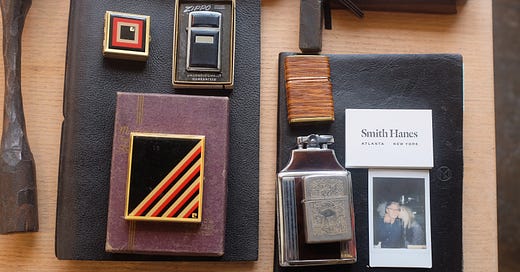



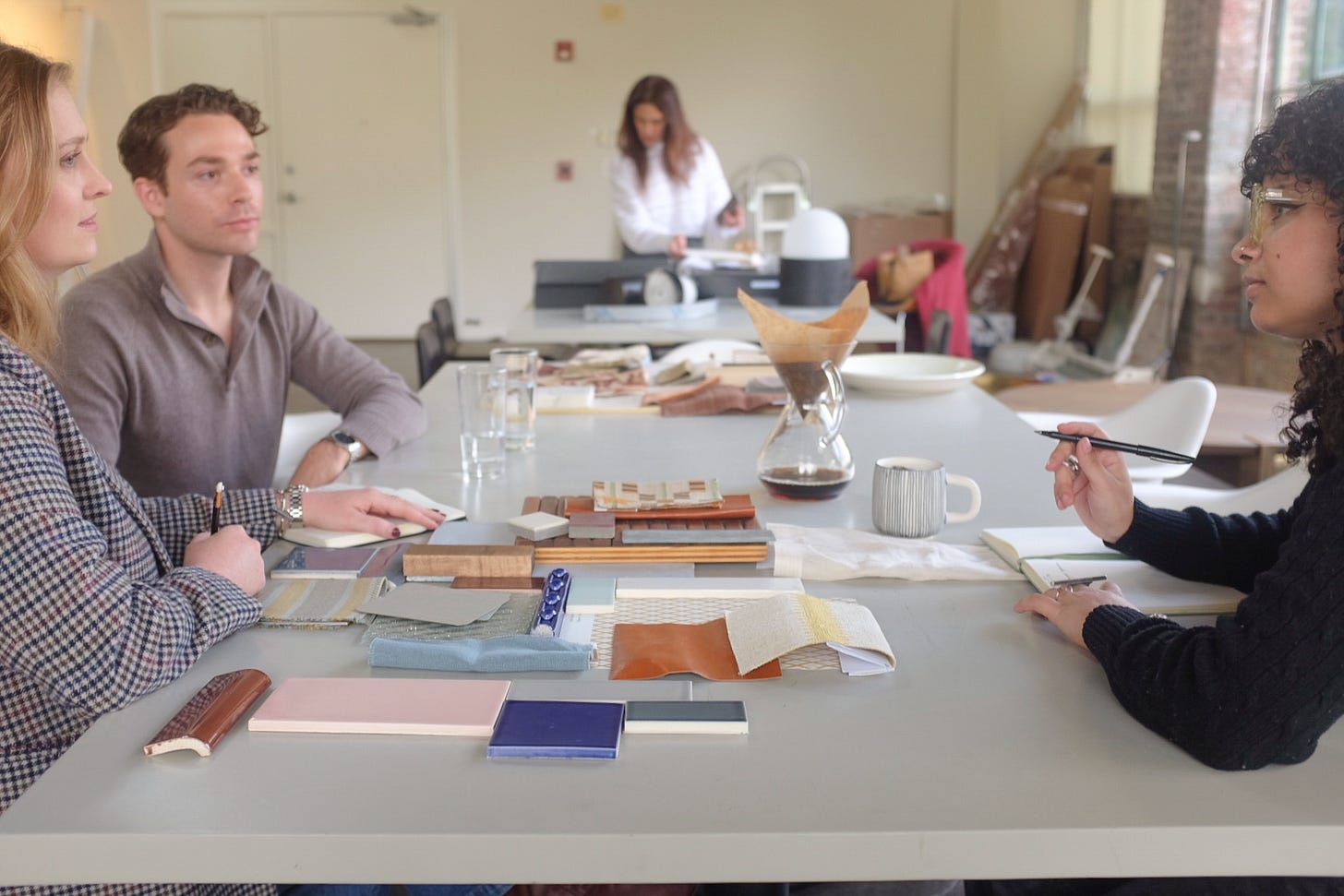
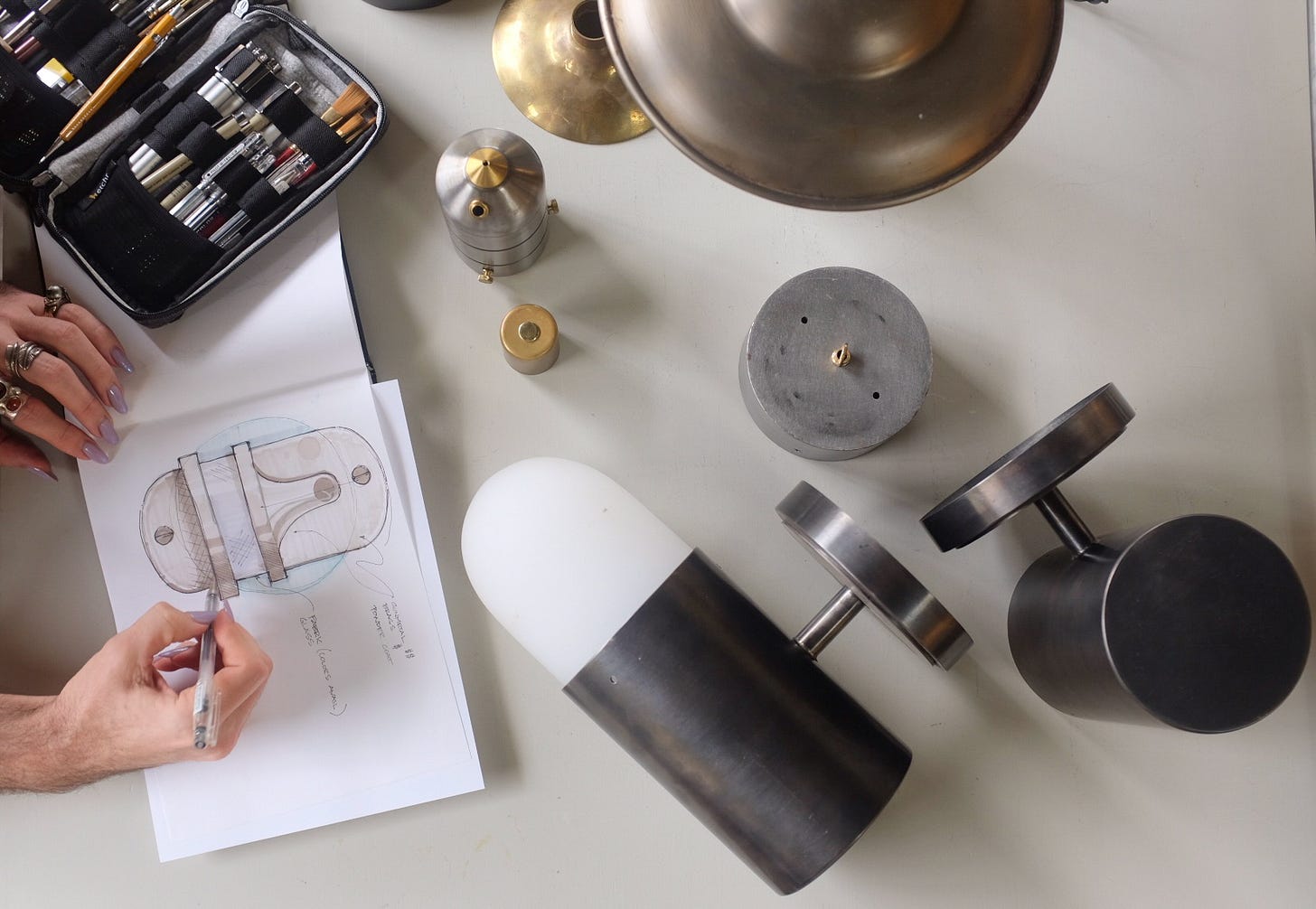
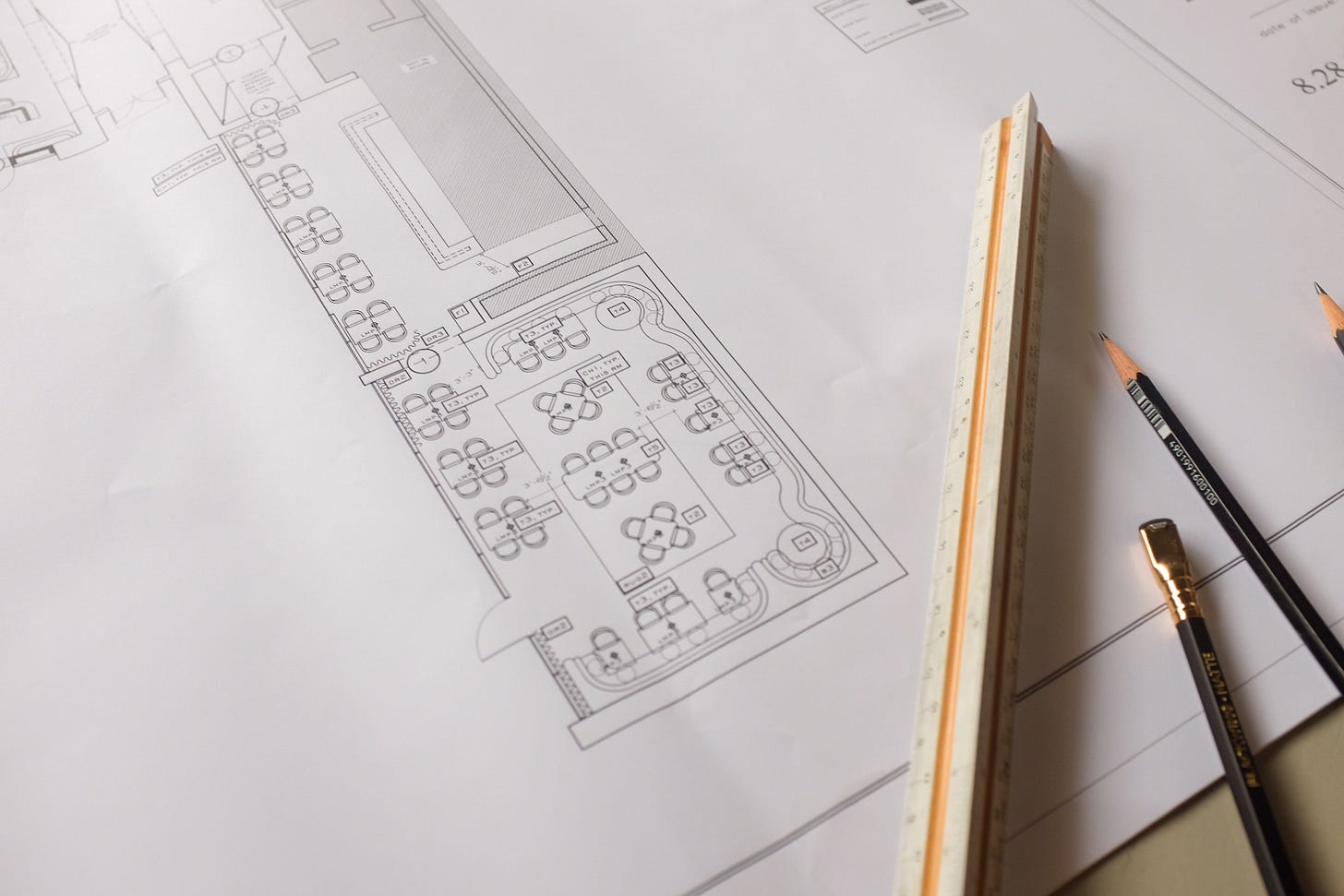
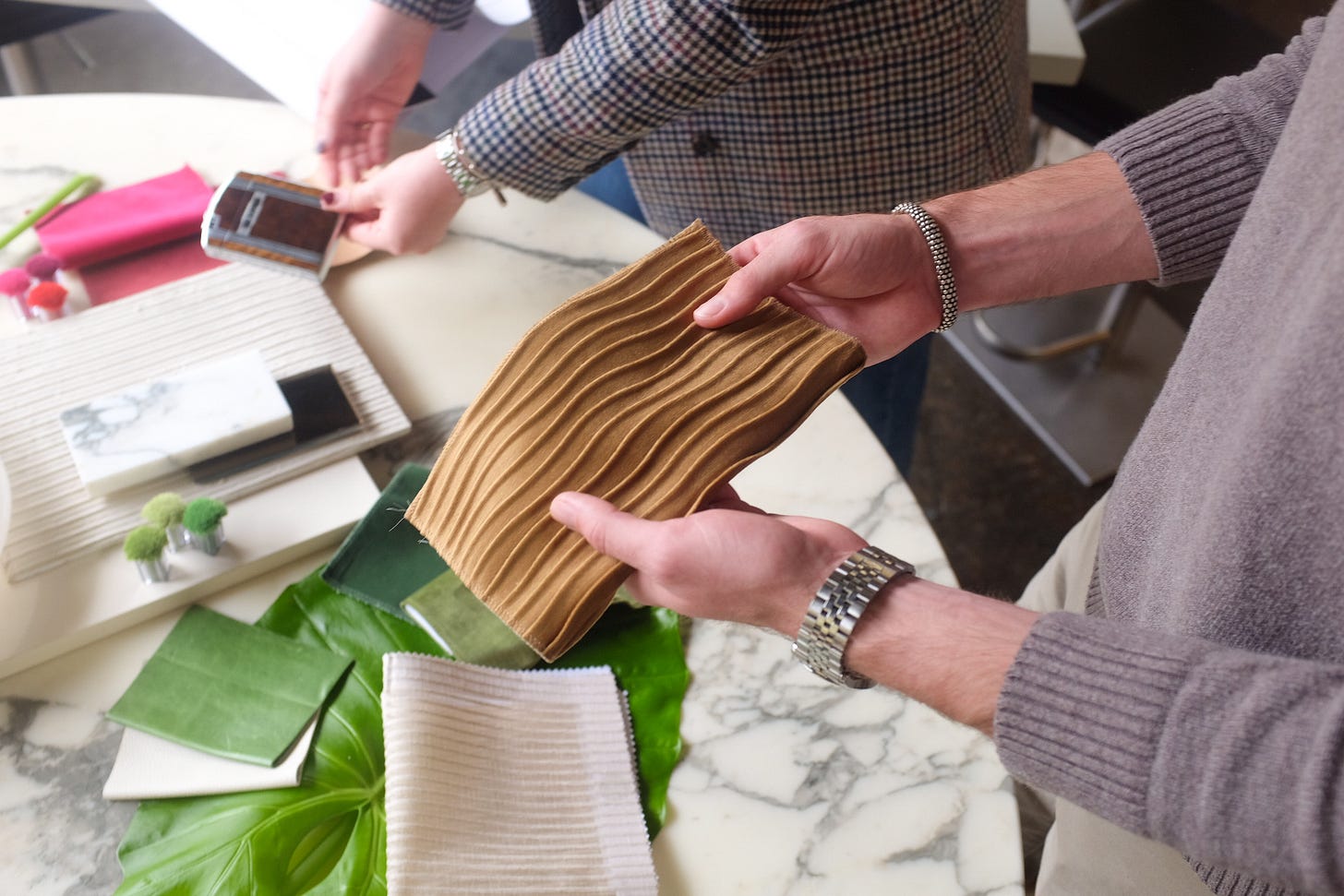






Great interview!
pay this man.